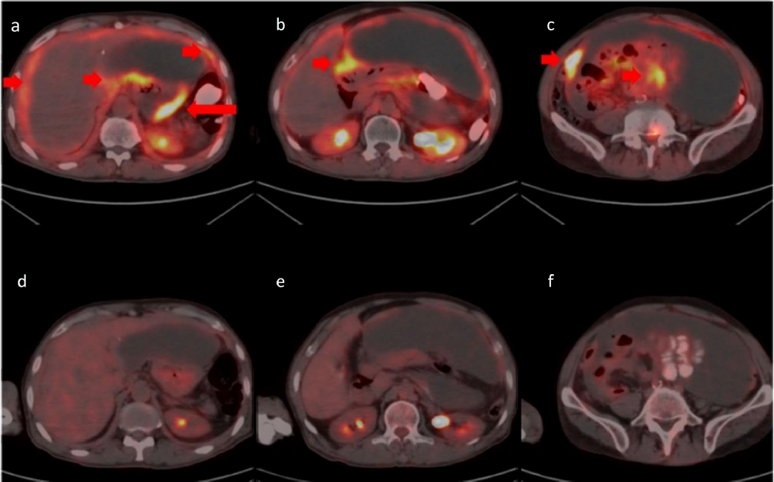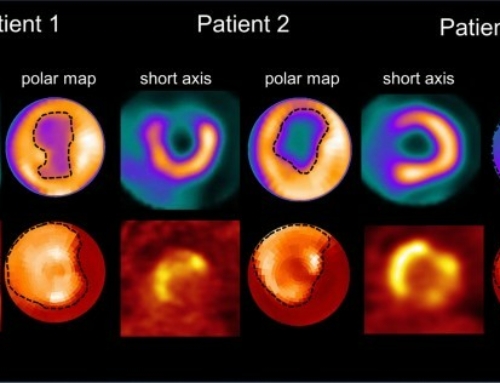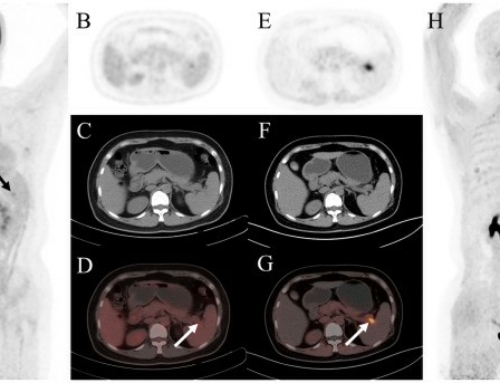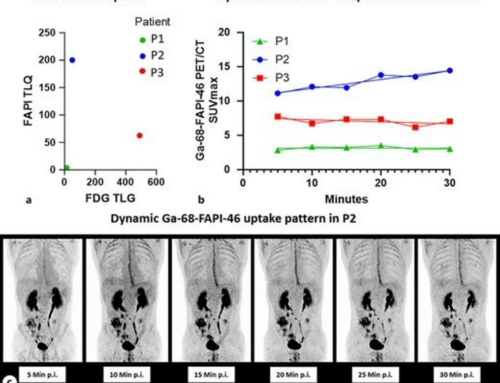Umut Elboga, Ertan Sahin, Tulay Kus, Yusuf Burak Cayirli, Gokmen Aktas, Merve Okuyan, Havva Yesil Cinkir, Fatih Teker, Ozlem Nuray Sever, Alper Aytekin, Latif Yılmaz, Aydın Aytekin, Ufuk Cimen, Vuslat Mumcu, Benan Kilbas, Kurtulus Eryilmaz, Davut Cakici, Yusuf Zeki Celen
Purpose: In this study, we aimed to investigate the utilization of 68Ga-FAPI PET/CT in comparison to 18FDG PET/CT to evaluate the peritoneal involvement of the gastrointestinal malignancies alongside primary lesions and other metastatic foci.
Procedures: A total of 37 patients with various gastrointestinal malignancies with accompanying peritoneal involvement who underwent 68Ga-FAPI PET/CT and 18FDG PET/CT imaging between September 2020 and June 2021 were included in this retrospective study. SUVmax values of 68Ga-FAPI and 18FDG were compared according to lesion locations. Also, the lesion localization ability of both imaging was compared in patient basis.
Results: Of the 37 patients with peritoneal involvement (23 males and 14 females; median age, 62.8 ± 12.7 years), 35.1% (n = 13) had colorectal cancer, 37.8% (n = 14) gastric cancer, and 27.0% (n = 10) pancreaticobiliary cancer. While 45.9% of them were operated, the remaining did not have surgery. The mean time interval between two studies was 3.2 days (range: 2-6 days). The mean SUVmax value of peritoneal metastases (p < 0.001) was significantly higher with 68Ga-FAPI PET/CT compared to that with 18FDG PET/CT, as in primary lesions (p < 0.001), lymph node metastases (p = 0.006), liver metastases (p = 0.002), and bone metastases (p = 0.018). A total of 185 lesions was detected in the initial assessment with 18FDG PET/CT. Of the total lesions detected with 18FDG PET/CT, 5 of them were evaluated as benign lesions with 68Ga-FAPI PET/CT also in accordance with the reference standard. In addition to 180 lesions detected with 18FDG PET/CT, a total of 37 additional malignant lesions, 12 of which were peritoneal metastases, were detected with 68Ga-FAPI PET/CT.
Conclusion: 68Ga-FAPI PET/CT was determined to be superior to 18FDG PET/CT in terms of detection of peritoneal involvement with high image quality as well as primary tumor and other metastatic foci. Consequently, 68Ga-FAPI PET/CT can be used as a complementary imaging modality especially for inconclusive 18FDG findings due to the lack of accuracy of 18FDG PET/CT in some of the metastatic regions, especially in the liver.


![Efficacy of [68Ga]Ga-FAPI-PET as a non-invasive evaluation method of liver fibrosis](https://sofie.com/wp-content/uploads/2025/06/info.ibamolecular-500x383.png)
![Comparison of [99mTc]Tc-FAPI SPECT/CT and [18F]FDG PET/CT as predictive biomarkers for immunotherapy response in gastrointestinal cancer](https://sofie.com/wp-content/uploads/2025/06/info.ibamolecular-500x383.jpg)


